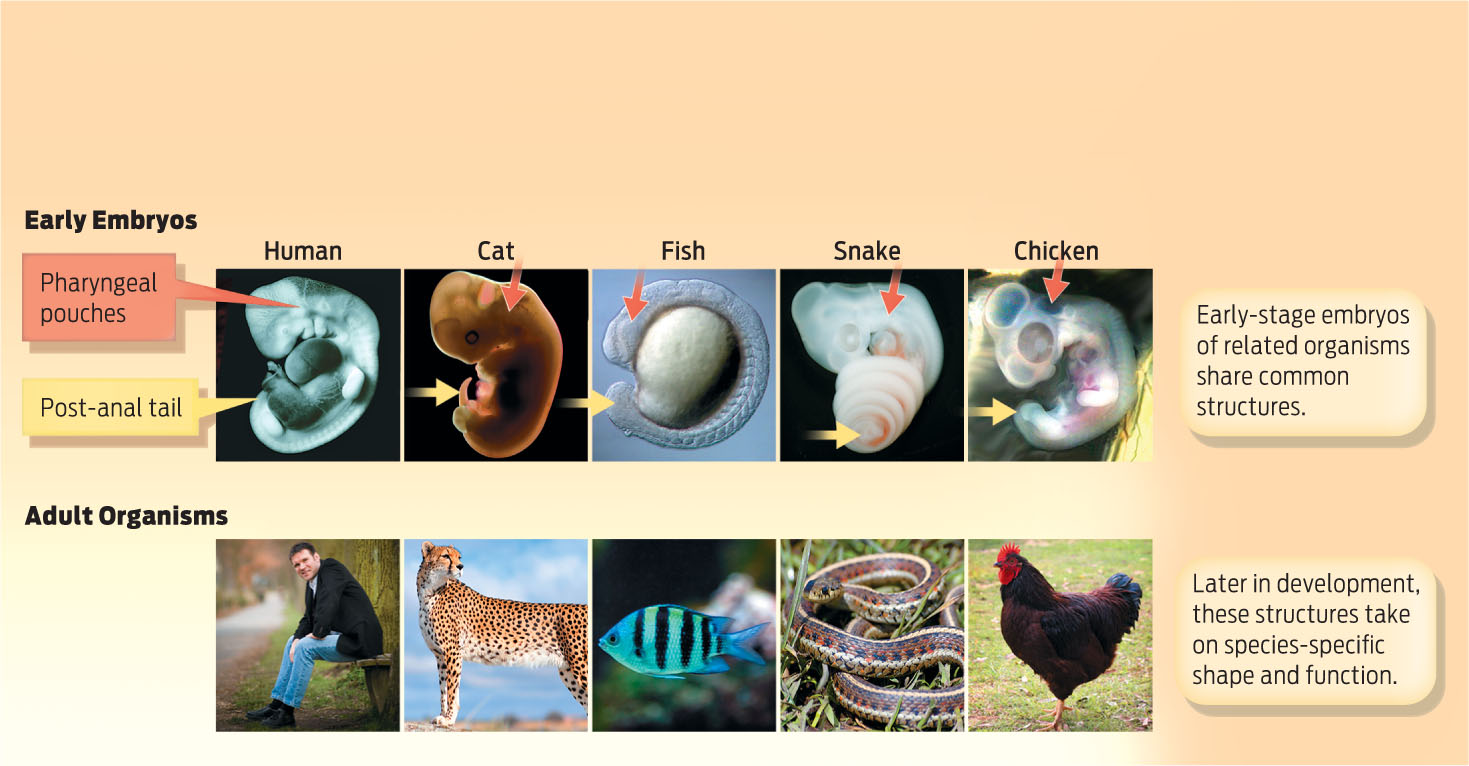
We can identify homologous structures by tracing their embryological development. Some of our middle ear bones, for example, are homologous with the jaw bones of reptiles and bones supporting gills in fish. We know this because all of these structures develop from the pharyngeal pouches that appear in all vertebrate embryos early in development. This developmental homology is strong evidence that all vertebrate animals are related by common ancestry. Genetic changes over time have introduced modifications in later stages that give rise to distinct species with vast physical differences.